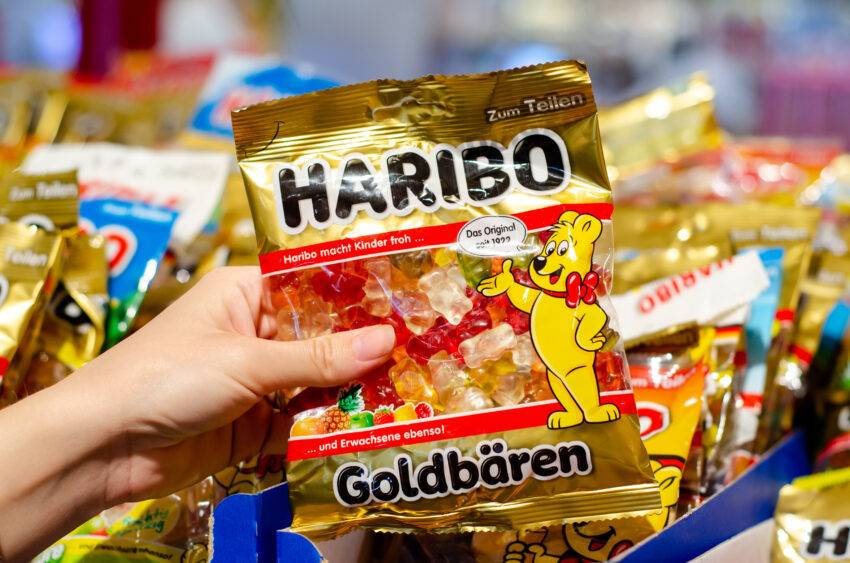The Fourth Board of Appeal of the European Union Intellectual Property Office (EUIPO) has reversed the refusal of Haribo’s figurative trade mark consisting of an image of its ‘Goldbear’ gummy bear on the basis that the mark does satisfy the minimum degree of distinctiveness.
Rigo Trading S.A, a holding company for Haribo, the well-known German confectionery company, filed an application for an international registration designating the EU for a figurative mark of its HARIBO ‘Goldbear’ for a range of non-edible goods in Classes 9, 14, 16, 18, 20, 21, 24, 25, 26, 27 and 28 including amongst other things clothing, jewellery and games.
Emily Roberts, partner in the Intellectual Property team at independent UK law firm Burges Salmon explains that the mark was refused for the majority of the goods in the application on the basis that it was considered to be devoid of distinctive character.
The examiner found that the appearance of the mark was already commonly used for decorative, artistic and aesthetic purposes for the contested goods. In support of its reasoning, the examiner provided various examples of other gummy bear shaped products and goods bearing gummy bear decoration on the market within the same classes as those applied for, including gummy bear shaped hairclips, a gummy bear shaped coin purse and a bag with a gummy bear decoration.
The examiner considered that the mark would be perceived as a commonplace depiction of a gummy bear as either a decorative element, the shape of the goods themselves or of their packaging, and as a result the mark did not meet the minimum degree of distinctive character necessary to function as a trade mark.
Board of Appeal decision
Haribo appealed the refusal and it came before the Fourth Board of Appeal of the EUIPO.
Overturning the refusal, the Board confirmed that a trade mark is considered to possess sufficient distinctive character if it is capable of enabling the relevant public to identify the origin of the goods which it covers and to distinguish them from those of other undertakings.
The Board considered that the sign, a gummy bear or a characterised figure of an animal, had no connection with the contested goods. Further, that the sign conveyed an overall impression that is unrelated to the likely or customary appearance of these goods. The mere fact that some of the contested goods may take the shape of a gummy bear is not in itself sufficient to establish that the mark consists a representation of the shape of the goods at issue.
In reviewing the examples of gummy bear shaped/decorated products provided by the examiner, the Board determined that the examples were not sufficient to demonstrate that it was an established practice of the relevant market sectors of the contested goods to offer gummy bear shaped items, or that the relevant public would perceive a gummy bear as a common motif.
The Board considered that the sign was not excessively simple and banal but included distinct characteristics, such as the positioning of the ears and the smile, which would create a visual impact on the relevant consumers. The Board also emphasised that originality and novelty are not relevant when considering the distinctive character of a mark.
As a result, the Board reversed the examiner’s decision and held that the sign had at least the minimum degree of distinctive character necessary to be protected as a trade mark in the European Union.
Key takeaways
The decision will be welcomed by brand owners. It confirms that when assessing the distinctiveness of a figurative mark, it is not necessary for a sign to be novel or original. Further, even if there are instances of decorative use or product shapes which are similar to a sign, this is not sufficient in itself to support a finding of non-distinctiveness. If a sign enables consumers to distinguish those goods from others on the marketplace, that is sufficient.


